Mr. Nguyen Hong Khuong, 32 years old, residing in Hoa Thanh A area, Thoi Hoa ward, O Mon district, is a character who was introduced in Can Tho Newspaper about the effective black snail farming model. Not only that, Mr. Khuong's "unique, strange" symbiotic betel fish farming model is also giving very good results.
On the weekend, Mr. Khuong is preparing 2kg of anchovy fish using oxygen to keep them alive, to deliver to customers. With a selling price of 250,000 VND/kg, Mr. Khuong has a decent income from this extra job.
Mr. Khuong said that due to the impact of the COVID-19 pandemic (in 2021), most eateries and restaurants were closed, so the consumption of betel nut fish was limited and prices dropped sharply. At peak times, the price of oxygenated betel nut fish could reach up to 500,000 VND/kg.
With an area of 1.2 hectares of water surface to raise black apple snails, Mr. Khuong leads water from rivers and canals, and the fish follow the water flow.
Because the snail farming environment is also favorable for fish to grow and reproduce, the number is gradually increasing. Mr. Khuong analyzed: In snail ponds, farmers are most afraid of large fish such as tilapia, snakehead fish, catfish... because they will eat snail eggs and newly hatched snails, the snail loss rate is very high, so we have to find ways to eliminate them.
But the betel fish does not harm snails but develops well due to the suitable symbiotic environment, their food is mainly snail feces and zooplankton.
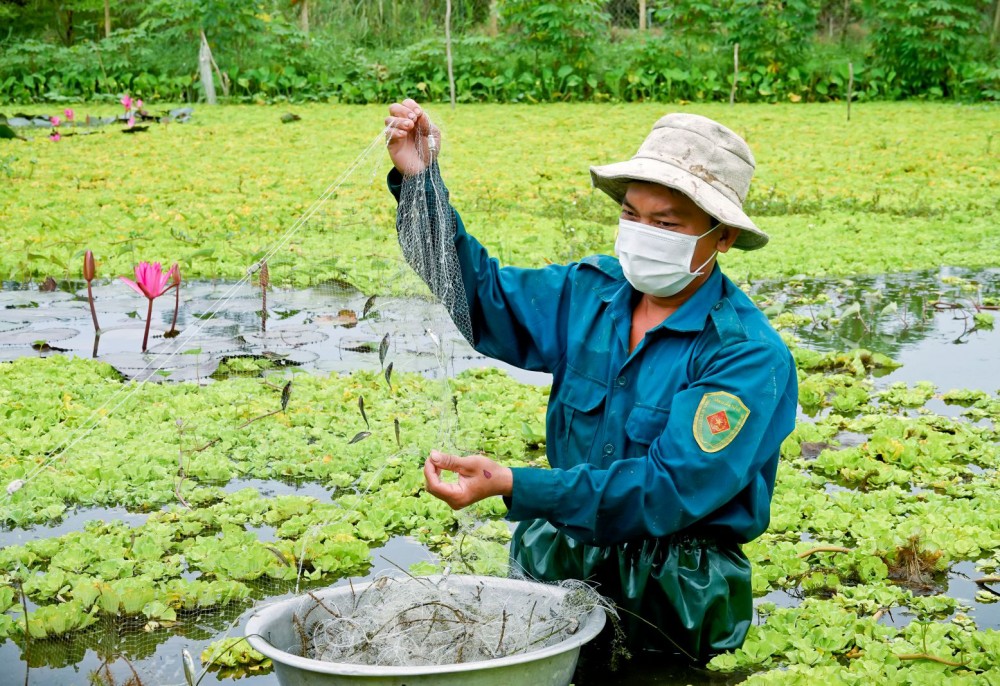
Spreading nets to catch betel nut fish raised in the same pond with black apple snails - a model of getting rich by Mr. Khuong, a farmer in Hoa Thanh A area, Thoi Hoa ward, O Mon district (Can Tho city).
Because he saw that the fish was not harmful but only beneficial, he decided to raise it in symbiosis with snails. Creating conditions for the fish to grow well means creating a suitable environment for the snails to grow. "Killing two birds with one stone", raising fish almost does not cost anything, from the breed to food, care... so the economic efficiency is high.
According to Mr. Khuong, the fish reproduces very quickly and in large numbers, comparable to ornamental guppies, so the source of breeding fish is very abundant.
Periodically, every 6 months he drains the pond to harvest snails, fish and renovate the pond. He leaves a few fish as breeders to release back and so on, harvesting continuously according to customer orders.
With 9 ponds, depending on customer orders, Mr. Khuong sells from 5-20kg of fish per month. With prices ranging from 250,000 VND to 500,000 VND/kg, the income from betel fish helps him cover living expenses, while the income from apple snails is his "savings".
The goby fish, also known by other names such as the goby fish or the seven goby fish, belongs to the goby family, but is smaller, quite similar and slightly larger than the betta fish. The fish lives in clear, slow-flowing water or pond water, especially suitable for environments with dense vegetation and plankton - both a shelter and a source of food for the fish.
To catch fish, if he wants to bring them home to process immediately, Mr. Khuong uses a small net to spread them out. After only about 15 minutes, the fish will be caught in the net, and he can remove 100-200 grams per net. To catch live fish, with oxygen to deliver to restaurants, Mr. Khuong uses a trap or a trap to set them up. It takes longer and he can catch more.
In the memory of Southern people, in the past, the betel fish was classified as trash fish, not a delicious fish and rarely caught to eat.
The fish is often eaten when caught together with other small fish, and is called "hun hin" by the people. The dish, almost unique to the Southern people in the past, was dried hun hin, eaten with soup or boiled rice water.
In modern life, the fish has become a specialty, appearing on the menus of luxury restaurants and eateries. The fish is made into many dishes such as hotpot with fish sauce, dried fish, fish sauce, fried fish, or the most "classic" is still braised fish with dried pepper and eaten with boiled mixed vegetables.
Because of the popularity of diners, the value of the fish is increasingly high and now it is a specialty fish. As Mr. Khuong said, before the COVID-19 pandemic, many restaurants and eateries in Can Tho City and An Giang Province continuously ordered fish with prices up to 500,000 VND/kg, but there were not enough fish to deliver.
The dynamism of Mr. Nguyen Hong Khuong not only brings high economic efficiency but also helps preserve wild fish species, which are gradually disappearing in the Mekong Delta. The "poor family" fish species has now "changed its life" thanks to the creativity in the agricultural economic model of Can Tho youth.
Source: https://danviet.vn/nuoi-ca-ba-trau-chung-ao-voi-oc-buou-den-trai-can-tho-bien-do-nha-ngheo-thanh-con-dac-san-20240822135024149.htm


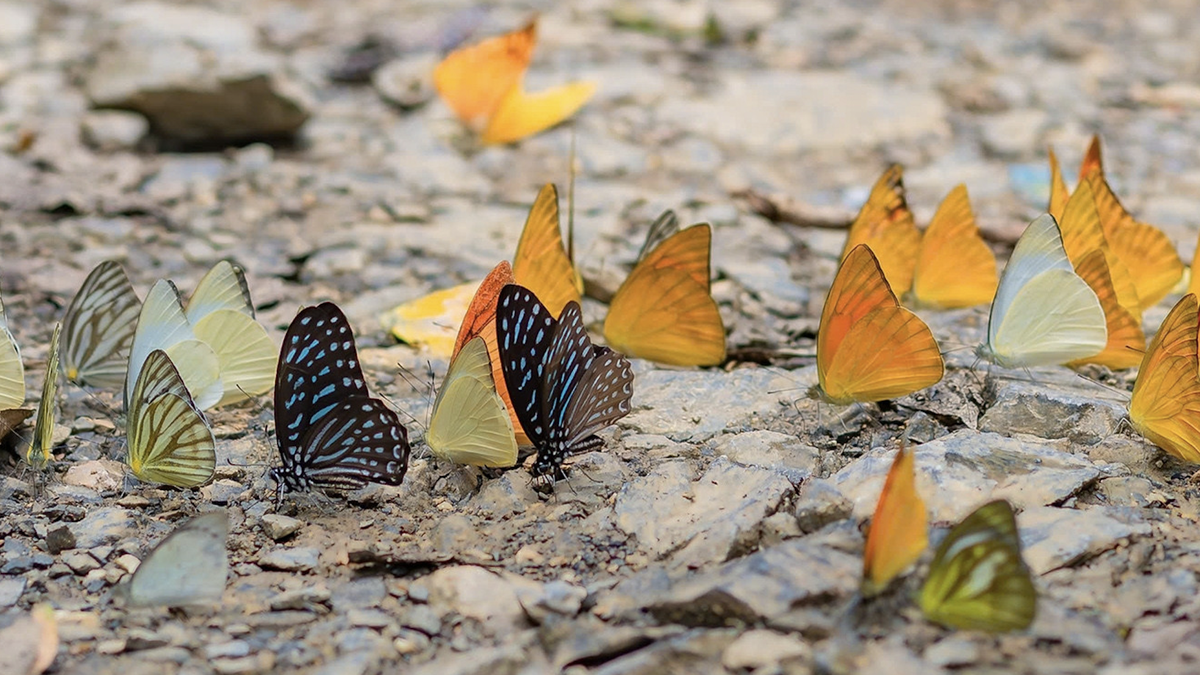
![[Photo] Nearly 3,000 students moved by stories about soldiers](https://vphoto.vietnam.vn/thumb/1200x675/vietnam/resource/IMAGE/2025/5/17/21da57c8241e42438b423eaa37215e0e)



![[Photo] Readers line up to visit the photo exhibition and receive a special publication commemorating the 135th birthday of President Ho Chi Minh at Nhan Dan Newspaper](https://vphoto.vietnam.vn/thumb/1200x675/vietnam/resource/IMAGE/2025/5/17/85b3197fc6bd43e6a9ee4db15101005b)






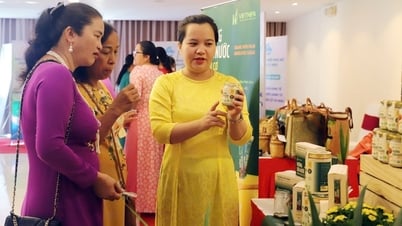








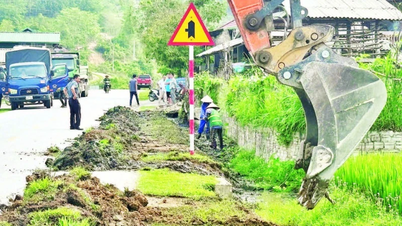

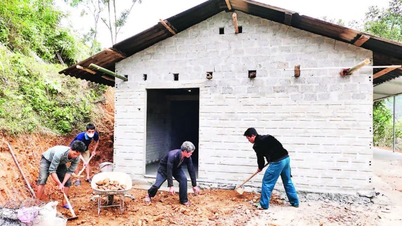
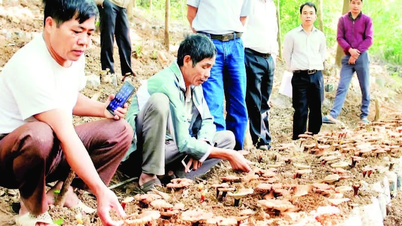
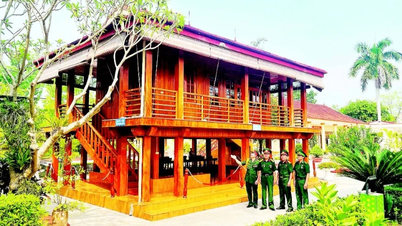




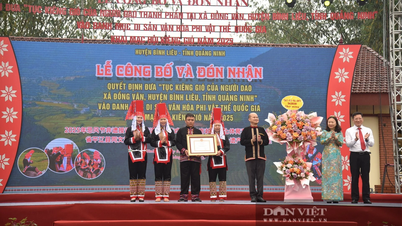




























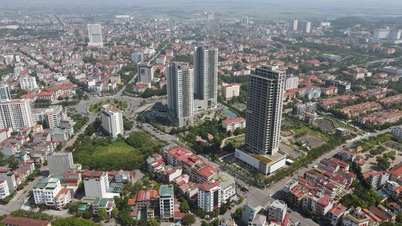
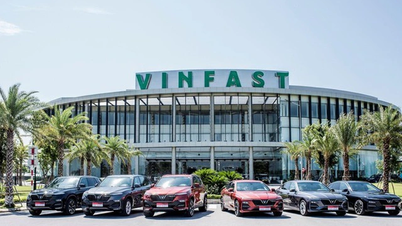










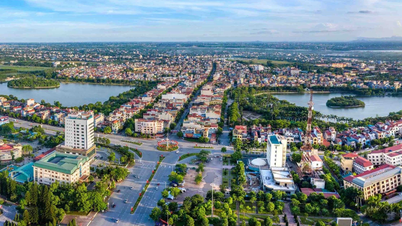



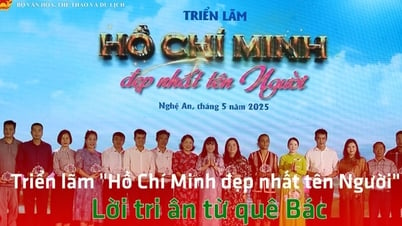





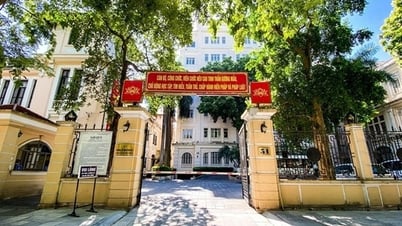




















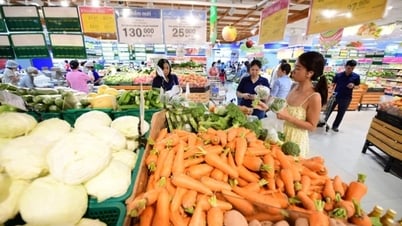

Comment (0)